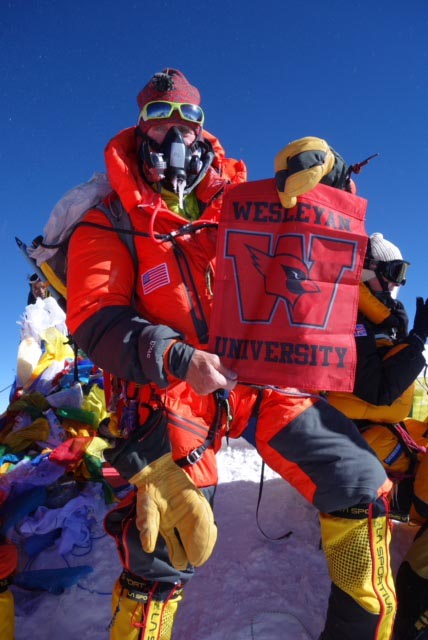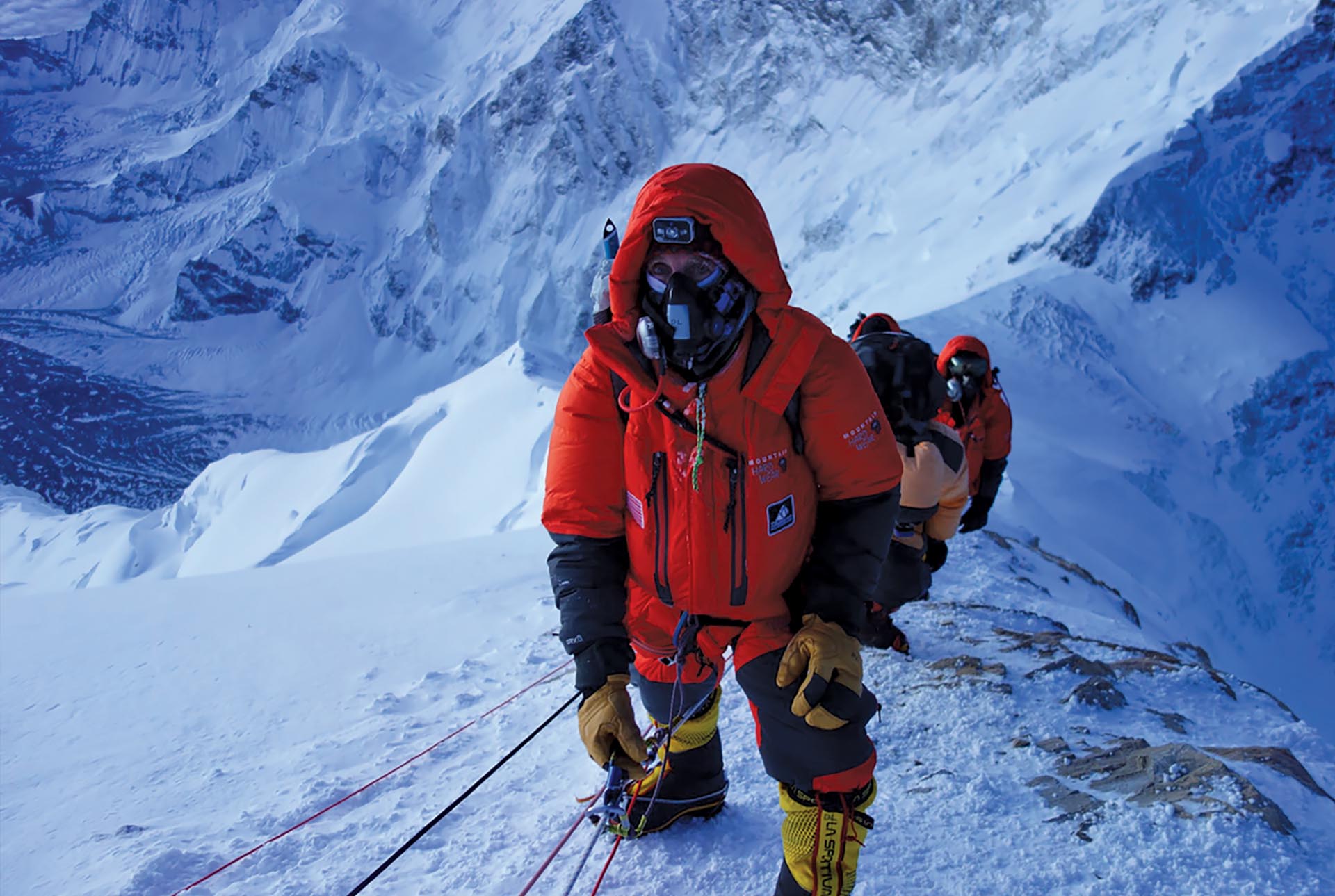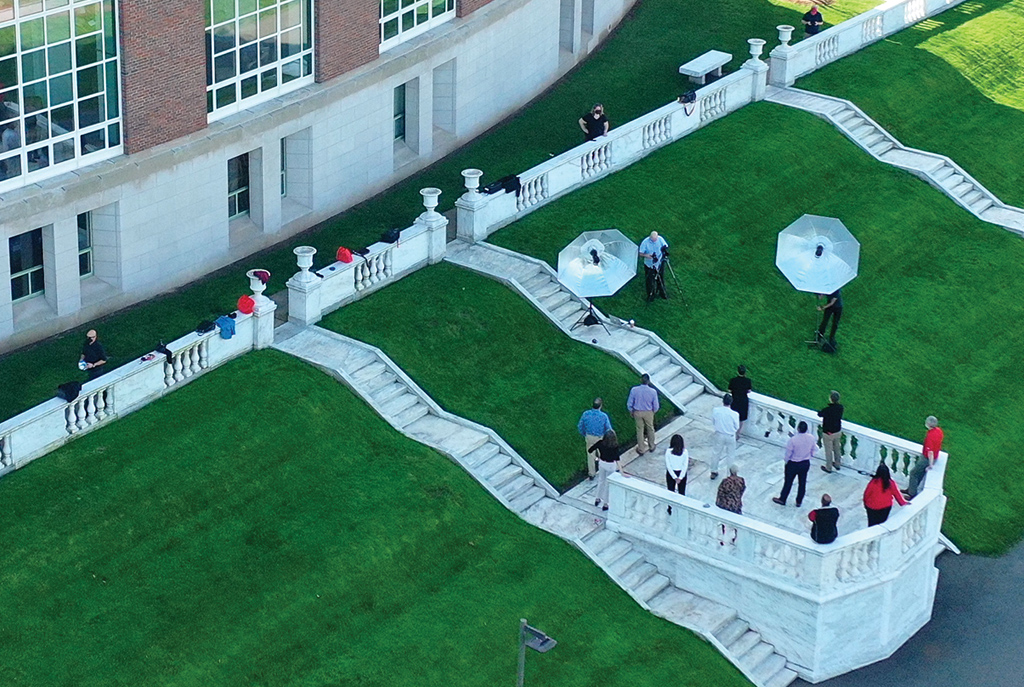Landman ’78: How to Summit Everest

Last spring, David Landman ’78, P’13 planted a Wesleyan pennant atop Mount Everest. This was his sixth mountain in the Seven Summits series, the highest mountain on each continent.
Ask him how long it took to prepare for this, and his answer—“It depends on how you look at it”—offers a mountain climber’s wide-angle view on the world.
“I could say 25 years or so because that’s how long I’ve been climbing,” he explains, “Or I could say 15 or 16 years because that’s how long since I did Mt. McKinley—Denali—my first of the seven. Or a year-and-a-half, because that’s how long I spent focused on Everest.”
His two-month stay in Nepal began with shorter acclimatization hikes. Summiting Everest required eight consecutive full days —six days up, two down—spent in unrelenting cold, with full-body exertion, and under ever-present risk. Landman, who has run marathons and completed iron-man triathlons, notes that the prolonged nature of the sport takes a toll, where even eating (freeze-dried food) and staying hydrated seem an unappealing struggle, although crucial to maintaining energy, body weight and temperature and health.

Is it dangerous? Of course. “You can’t be naïve,” he says, “The environment holds inherent dangers—avalanches, rock falls, unpredictable weather patterns—but peril on a mountaintop is apt to confront a climber not as one incident but as a series of variables.”
For instance: “You watch the forecasts, but the weather can change. In a storm, or in the night, you can get split up from your Sherpa. If he’s carrying your spare bottles of oxygen, then what happens when your current bottle runs out? That’s how you get frostbite: minus the extra oxygen, your blood thickens and you slow down. Then maybe you sit down or go behind a rock to get out of the wind and you don’t get up: it’s a cascade.”
And lest he needed a reminder: “I saw a recently deceased person on our descent— halfway down the mountain in a tent, with only his feet outside. We heard he was a Russian in his 60s who had a heart attack. But you just have to keep moving.” With individual resources stretched to their limits, stopping for strangers, especially those past help, just isn’t possible or prudent.
The final summit push on the sixth day of Landman’s climb began at 7 p.m., with the goal of reaching the peak at dawn. But the all-night hike was less about the beauty of the sunrise and more about the precariousness of day that will follow.
“When you’re highly fatigued, that’s when people make mistakes and things can turn bad,” he explains. “You want to be descending in the light.”
The actual summit, he says, was well worth the extreme effort though not, perhaps, an ebullient celebration.
“Some people arrive at the summit literally on their hands and knees,” he notes. “But if you’re feeling good, the summit experience is a combination of happiness that you’ve made it and relief that everything seems to be going well. I mean, it’s great; I would do it again tomorrow, but it is grueling.”
And, he adds, “You absolutely cannot reach the summit without the amazing Sherpas. They set the ladders in place, anchor the miles of ropes, and create a lasting bond with their climbers.”
He hopes next year to complete his final summit of the seven on the South American continent: Aconcagua, in Argentina.



